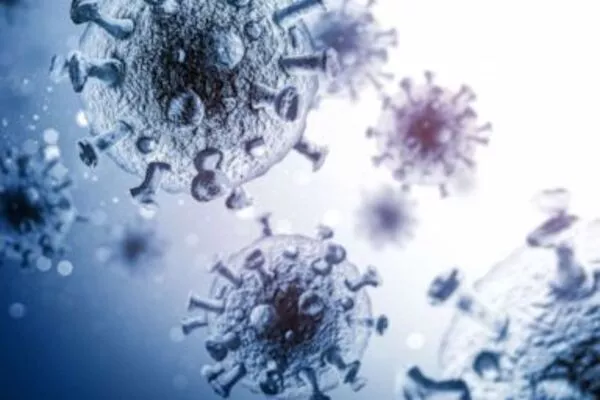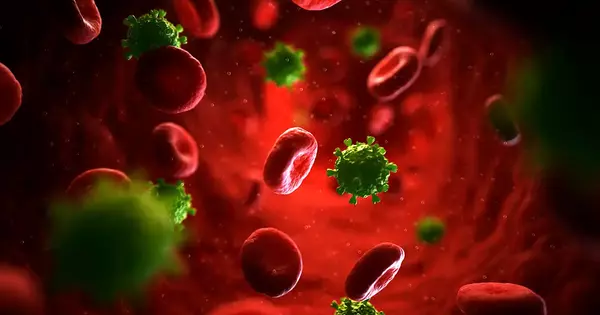A study published today in eLife suggests that carefully designed cocktails of broadly neutralizing antibodies (bNAbs) could help treat HIV while reducing the risk of the virus escaping treatment.
According to the findings, computational approaches to selecting bNAb combinations based on viral genetics could help prevent viral escape, making HIV treatment more effective. It may also provide a strategy for developing effective bNAb combinations for treating other rapidly evolving pathogens.
bNAbs are a promising new tool for treating or potentially curing infections caused by rapidly evolving viruses such as HIV. Clinical trials using a single bNAb to treat HIV have revealed that some viral strains may survive the treatment and cause a virus rebound in the blood. Combinations of bNAbs may thus be a more effective approach, but finding the best combinations is difficult.
“For our study, we proposed using a computational approach to predict the effectiveness of bNAb combinations based on HIV genetics,” says Colin LaMont, a researcher at the Max Planck Institute for Dynamics and Self-Organization in Göttingen, Germany.
“Our study shows that leveraging genetic data can help us design more effective HIV therapies. Our approach may also be useful for designing therapies against other rapidly evolving agents that cause disease, such as the Hepatitis C virus, drug-resistant bacteria, or cancer tumour cells.
Nour Mohammad
LaMont and colleagues used high-throughput sequencing to analyze the genetics of HIV viruses collected over 10 years from 11 untreated patients with HIV. The team used this data to predict which viral strains might be able to escape treatment with different bNAbs and whether dodging bNAbs was associated with a survival cost. Next, using computational methods, they applied the knowledge gained to predict viral rebounds in three real-life trials of bNAbs.
Finally, the researchers used a computational approach to identify a bNAb combination that is least likely to allow any virus to escape. They also discovered that some bNAbs, such as 10-1074, are more effective against diverse virus populations because mutations that allow viruses to escape make the virus less likely to survive. Others, such as PGT121, are more effective against less diverse viral populations because escape mutations are uncommon. Overall, the results indicated that the best combination consists of three bNAbs: PG9, PGT151, and VRC01.
Antiretroviral therapy reduces the ability of HIV to multiply and create new variants, limiting the genetic diversity of the viral population and lowering the likelihood for emergence of bNAb escape variants. The authors said more studies are needed to confirm the potential benefits of combining ART and bNAbs.

“We’ve shown that combining PG9, PGT151, and VRC01 reduces the likelihood of viral rebound to less than 1%,” LaMont says. “It accomplishes this by focusing on three distinct regions of the virus’s protective outer wrapping, or envelope.”
“Combining bNAbs, administered via intravenous infusion every few months, with current antiretroviral therapies (ART) that require daily doses could further improve long-term HIV treatment success,” says senior author Armita Nourmohammad, Assistant Professor of Physics at the University of Washington, Seattle.
ART reduces the ability of HIV to multiply and create new variants, limiting the genetic diversity of the viral population and lowering the likelihood for emergence of bNAb escape variants. The authors say that more studies are needed to confirm the potential benefits of combining ART and bNAbs.
“Our study shows that leveraging genetic data can help us design more effective HIV therapies,” Nourmohammad concludes. “Our approach may also be useful for designing therapies against other rapidly evolving agents that cause disease, such as the Hepatitis C virus, drug-resistant bacteria, or cancer tumour cells.”
The treatment of patients with antiviral drugs, which can suppress HIV-1 replication to undetectable levels, has been the most significant advance in the medical management of HIV-1 infection. The identification of HIV-1 as the causative agent of AIDS, as well as a growing understanding of the virus replication cycle, have aided this effort by providing researchers with the knowledge and tools needed to pursue drug discovery efforts centered on targeted inhibition with specific pharmacological agents.





